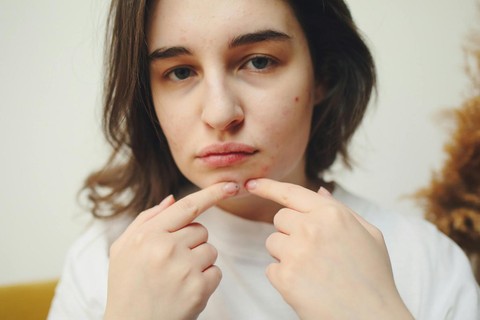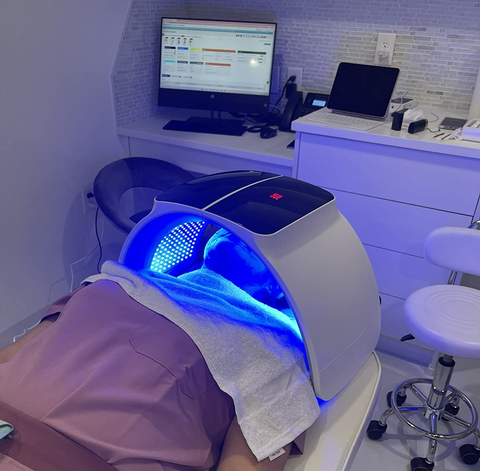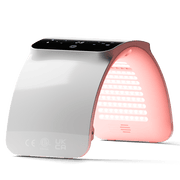Understanding Acne Spots
Acne spots are a chronic inflammatory skin disease that mainly accumulates in the sebaceous cells of the hair follicle. Acne is a disfiguring disease. If not treated in time or squeezed by itself, it will cause serious consequences and even disfigurement. Mild acne may be left with temporary pigmentation after healing, while severe acne can leave dimpled or hypertrophic scars that affect the appearance of the skin.

Causes of Acne Spots
- Excessive sebum secretion (local androgen elevation): Oily skin is generallymore prone to breakouts than dry skin. After puberty, the level of androgens, especially testosterone, rises rapidly in the human body, which promotes the development of sebaceous glands and produces large amounts of sebum. The secreted oil needs to be excreted from the pores to the skin's surface. If the oil cannot be discharged and accumulates in the pores, sebaceous plugs will form to block the pores, causing acne spots.
- Abnormal keratinization of the sebaceous glandsof the hair follicle causes impaired sebum excretion, resulting in the formation of keratin plugs. In addition to sebum that can clog pores, there is also a thick stratum corneum, external dust, greasy skin care products, cosmetics, etc., which may clog pores, which will form acne!
- Inflammatory reaction:When you don't get good sun protection, UV rays can cause skin inflammation first and then slowly turn from inflammation to injury. This kind of damage is sometimes invisible to the naked eye, and if the inflammation encounters a variety of microorganisms, especially Propionibacterium acnes, it will eventually induce an inflammatory reaction and cause acne.
Acne Spots Treatment
There are several treatment options available for treating acne, such as topical creams like tretinoin, oral medications, etc. Conventional treatments can be effective, but they may not always provide the desired results. For a long time, dermatologists have paid less attention to the treatment of post-inflammatory skin lesions, including acne scars and acne pits. Among light therapy, blue light therapy is a popular method among doctors and patients' treatments for acne. Compared to intense pulsed light and lasers, blue light therapy is not so irritating and has been verified to be safe and effective.
What is Blue Light Therapy?
The wavelength of blue light therapy is high-energy short light between 400-500 nm. Its wavelength is close to ultraviolet light, which can be divided into natural blue light and artificial blue light, according to the source. Natural blue light comes from sunlight, and artificial blue light comes from a variety of electronic devices in life.
How Blue Light Therapy Works for Acne Spots?
With a wavelength of about 420nm, it acts on the superficial layer of the skin and quickly kills Propionibacterium acnes (P. acnes) by exciting the porphyrins within the bacteria. It changes the pH value inside cells, which plays an antibacterial and anti-inflammatory role. It can also effectively inhibit the secretion of sebaceous gland oil and prevent the recurrence of pimples. The blue light therapy device uses high-purity, high-power density light to irradiate the skin, which can change the structure of skin tissue, kill bacteria, provide a suitable environment for new cells, and repair inflammatory acne.

How Does Blue Light Therapy Compare to Other Treatments for Acne?
Blue light therapy is a non-invasive and gentle approach, unlike conventional treatments that can be harsh on the skin. It addresses the root cause of acne by targeting the bacteria rather than just treating the symptoms. Blue light therapy can be an effective alternative for individuals who have developed antibiotic resistance or are looking for a drug-free solution.
Benefits of Using Blue Light Therapy for Acne Spots
- Reduces inflammation and rednessby targeting the underlying causes of acne; blue light therapy can help to reduce inflammation and the redness associated with acne spots.
- Effective in reducing acne-causing bacteria. The specific wavelengths of blue light have been shown to be highly effective in eliminating the bacteria responsible for acne.
- Convenient and easyto incorporate into a skincare routine: Blue light therapy can be done at home or in a professional setting, making it a convenient option for many individuals. The treatment of the whole face can be completed at one time, and the patient can leave immediately after the treatment.
- The output intensity of the light source is stable, the therapeutic dose is accurate, and the life of the light source is long.
- No heat, no ultraviolet rays, does not involve harsh chemicals or abrasive procedures.
No pigmentation. Non-contact, gentle treatment, quick effect, short course of treatment.
- It can effectively enhance the activity of skin collagencells, smooth fine wrinkles, lighten age spots, and reduce solar skin damage
Incorporating Blue Light Therapy into Your Acne Spot Treatment Routine
- Blue light irradiation for 20 minutes each time is appropriate. It is recommended to do at least 2 times a week.
- Strictly avoid strong light exposurebefore and after treatment, at least for 3 day If you need to go out, avoid direct sunlight and apply sunscreen.
- After treatment, you can wash your cheeks with water normally and avoid using irritating facial cleansers. You can apply antibacterial ointment moderately according to the doctor's instructions if there is broken skin.
- During the treatment course,the treatment area needs to be strengthened with basic care such as moisturizing, hydration, and sunscreen;
- Determine the best blue light therapy device or treatment option based on your needs and skin type.
- Establish a consistent routine, following the recommended exposure times and frequency for optimal results.
Is it effective to do blue light acne spot treatment once?
Blue light therapy can not eliminate acne once. Doing it once only has a certain acne effect, but the treatment effect also needs to be judged according to the degree of inflammation. It is best to do a course of treatment. Generally, you can take it once every 1-2 weeks; after using it 5 times, redness, scars, swelling, and inflamed acne can be eliminated.
Conclusion
In short, the blue light therapy device emits cold light and is one of the safest and most effective treatments for acne spots and skin rejuvenation. In addition, treating acne with a combination of blue and red light therapy is good for clearing inflammation and cystic acne spots by improving immune mechanisms.













 Small
Small

 Moderate
Moderate

 Moderate
Moderate

 Moderate
Moderate

 Full
Full



